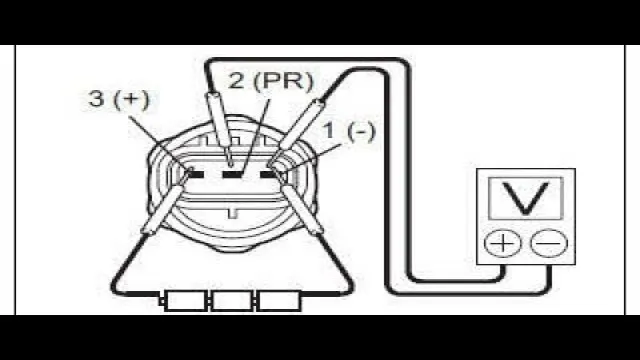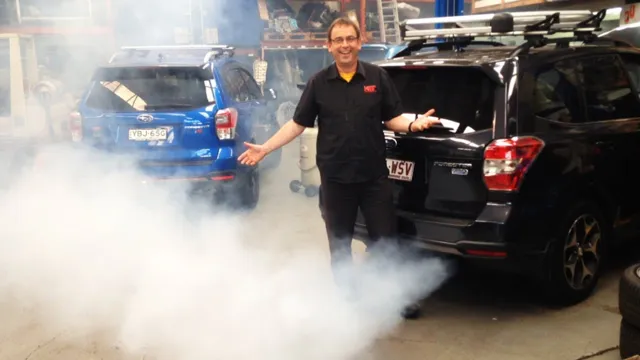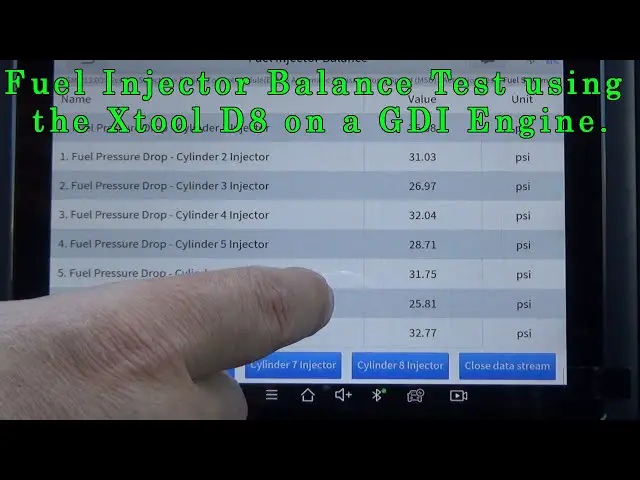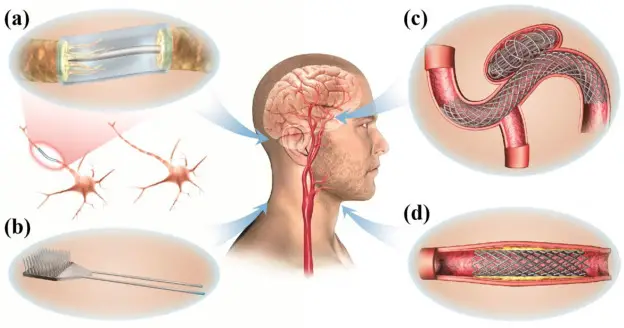Unlock the Secret: How to Bypass A/C Pressure Switch and Stay Cool All Summer Long!
Feeling hot and sticky in your car during the summer months can be unbearable, especially if your A/C isn’t working properly. If your A/C pressure switch is causing your unit to malfunction, you may be wondering if there’s a way to bypass it. While there are different methods to bypass the A/C pressure switch, it’s important to understand the underlying issues and potential hazards before attempting these steps.
In this article, we’ll go over the pros and cons of bypassing the A/C pressure switch, give you tips and tricks, and explain why it’s often better to leave this job to the professionals. By the end of this article, you’ll have a better understanding of what’s involved, and you’ll be better equipped to make an informed decision to get your A/C running smoothly again.
Understanding A/C Pressure Switches
If you’re experiencing issues with your car’s air conditioning system, the pressure switch may be to blame. A/C pressure switches are designed to monitor the pressure in the A/C system and shut down the compressor if the pressure becomes too high or too low. This helps to prevent damage to the compressor and other components.
However, a faulty pressure switch can cause the A/C to stop working altogether. If you’re wondering how to bypass A/C pressure switch, it’s important to note that this is not recommended. Bypassing the pressure switch can be dangerous, as it can cause the A/C system to operate at a pressure that is too high, resulting in a potential explosion or damage to other components.
Instead, it’s best to have a professional mechanic diagnose and repair the issue with your A/C system. They can safely replace any faulty parts and ensure that your A/C system is working properly. Remember, safety should always come first when it comes to working on your car.
What is an A/C Pressure Switch?
An A/C pressure switch is an important component in your air conditioning system. It’s responsible for monitoring the pressure of the refrigerant in the A/C system and ensuring that it remains at safe levels. There are two types of A/C pressure switches: the high-pressure switch and the low-pressure switch.
The high-pressure switch is activated when the pressure of the refrigerant in the system is too high, which can cause damage to the compressor and other components. The low-pressure switch is activated when the pressure of the refrigerant is too low, which can indicate a leak or other issue in the system. Understanding A/C pressure switches is essential for keeping your A/C system running smoothly and avoiding costly repairs.
If you suspect that your A/C pressure switch may be faulty, it’s important to have it checked and replaced if necessary by a qualified technician. Overall, A/C pressure switches play a crucial role in the proper functioning of your A/C system and should not be overlooked.
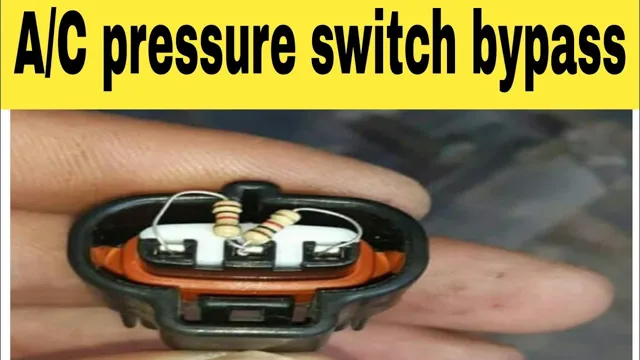
Why Would You Want to Bypass It?
A/C Pressure Switch If you’re wondering why anyone would want to bypass an A/C pressure switch, then you need to understand the function of this essential component. An A/C pressure switch is responsible for monitoring the pressure of the refrigerant in the A/C system and shutting off the compressor if the pressure gets too high or too low. So, why would someone want to bypass it? One reason might be a faulty switch that causes your A/C to malfunction.
Another reason could be to diagnose the problem by bypassing the switch temporarily and seeing if the A/C functions properly. However, it’s important to note that bypassing the A/C pressure switch is not a long-term solution and can be dangerous if done incorrectly. It’s always best to consult a professional technician who can properly diagnose and repair the problem.
Consequences of Bypassing
A/C Pressure Switches Air conditioning pressure switches are critical components that measure the pressure of the refrigerant and ensure safe operation of the A/C system. When the pressure switch fails, it can cause problems such as overheating, compressor damage, and even fires. The most common consequence of bypassing an A/C pressure switch is the risk of refrigerant leaks.
The A/C pressure switch senses the amount of refrigerant in the system and shuts down the compressor if the refrigerant levels are too low or too high. By bypassing this switch, the compressor will continue to run regardless of the refrigerant levels, causing the compressor to overheat and eventually fail. This can create costly repairs and unsafe driving conditions, making it essential to maintain the proper function of the A/C pressure switch.
By understanding the purpose of the A/C pressure switch and replacing any faulty components, drivers can maintain their A/C system’s safe and efficient operation, reducing the risk of costly repairs and system failures.
How to Bypass an A/C Pressure Switch
If you’re wondering how to bypass an A/C pressure switch, there are a few things you need to consider. First, why are you bypassing the switch? If it’s because your A/C isn’t working and you want to troubleshoot the problem, bypassing the switch may not be the best idea. The pressure switch is designed to protect your A/C system from damage by shutting it down if the pressure gets too high or too low.
By bypassing the switch, you’re taking away that protection and potentially risking damage to your system. However, if you’re certain that the pressure switch is the culprit and you need to bypass it temporarily to get the A/C running, there are a few steps you can follow. First, locate the pressure switch, which is usually located near the A/C compressor.
Identify the two wires coming from the switch and use wire cutters to cut them. Strip the ends of the wires and connect them together using a wire nut or electrical tape. This will bypass the switch and allow the A/C to run, but again, it’s not a long-term solution and you should have the switch replaced as soon as possible to ensure the proper functioning of your A/C system.
Remember to only attempt this if you are experienced in working with electrical systems, and always prioritize your safety.
Identify the Pressure Switch Location
To bypass an A/C pressure switch, the first step is to identify its location. The pressure switch is typically located on the high-pressure side of the A/C system, near the compressor. It’s designed to prevent the compressor from running if the refrigerant pressure is either too high or too low, which can cause damage to the system.
Once you’ve located the pressure switch, you can bypass it by disconnecting the electrical connector that’s attached to it. This will disable the switch and allow the compressor to run, but it’s important to note that bypassing the pressure switch is not a recommended solution. The switch is designed to protect the A/C system, and bypassing it can lead to more serious problems in the long run.
If your A/C system isn’t working properly and you’re considering bypassing the pressure switch, it’s best to have a qualified technician diagnose the problem and recommend the appropriate repairs. They have the expertise to identify the root cause of the issue and provide a safe and effective solution. So, while it may be tempting to take matters into your own hands and bypass the pressure switch, it’s always best to leave A/C repairs to the professionals.
Use a Jumper Wire
If you’re experiencing issues with your car’s air conditioning system and suspect that the A/C pressure switch may be causing the problem, you can bypass it using a simple jumper wire. The A/C pressure switch is responsible for monitoring the pressure in the refrigerant system and turning off the compressor when the pressure gets too high or too low, preventing damage to the system. However, sometimes this switch can malfunction, causing the compressor to stop working even when the pressure is normal.
To bypass the switch, locate it under the hood of your car and look for two wires that lead to it. Disconnect those wires and use a jumper wire to connect them together. This will complete the circuit and trick the system into thinking that the pressure is within normal limits, allowing the compressor to turn on.
Keep in mind that bypassing the A/C pressure switch should only be done as a temporary solution and should not be relied on long-term. It’s important to have the switch replaced by a professional as soon as possible to ensure the proper functioning of your A/C system and prevent further damage.
Check if Bypass Worked
Bypassing an A/C pressure switch can be a simple solution for those experiencing issues with their air conditioning system. After following the necessary steps to bypass the switch, it’s important to test to see if the bypass worked properly. To do this, turn on the A/C and observe if the compressor engages.
If the compressor turns on and the cold air is blowing, then the bypass was successful. However, if the compressor still fails to turn on or there is no cold air, then further troubleshooting may be necessary. Keep in mind that bypassing the A/C pressure switch is not a permanent fix and can potentially cause damage to the system if done improperly.
It’s recommended to consult a professional before attempting any bypasses to ensure the safety and longevity of your A/C system.
Alternative Solutions to Bypassing
If you need to bypass an A/C pressure switch, there are a few alternative solutions to consider. The easiest and safest method is to simply replace the faulty switch with a new one. However, if that’s not possible, you can try jumping the switch by connecting the two terminals with a wire or paperclip.
Keep in mind though that this is not recommended as it can be dangerous and may damage your A/C system. Another option is to use a resistor in place of the switch, but this requires some technical knowledge and skill. If you’re not comfortable with any of these methods, it’s best to consult an expert mechanic who can safely and effectively fix the issue for you.
Remember that bypassing an A/C pressure switch can compromise the safety and efficiency of your cooling system, so it’s important to take the time to find the right solution.
Cleaning the Pressure Switch
If you are experiencing issues with your pressure switch, there might be an alternative solution to bypassing it. Instead, try cleaning it to see if that solves your problem. First, turn off the power to your air compressor and disconnect it from the air supply.
Locate the pressure switch and remove it from the compressor. Next, use a soft cloth or a wire brush to clean the switch contacts and remove any debris or corrosion. If the switch is heavily corroded, you may need to replace it.
After cleaning, reassemble the switch and turn on the power to your compressor. If the switch is still not functioning properly, it might be time to consider a replacement. Taking the time to properly maintain your pressure switch can save you time and money in the long run, while ensuring safe and efficient operation of your air compressor.
Replacing the Pressure Switch
If your pressure switch is malfunctioning, there are alternative solutions to bypassing it. A quick fix alternative to help with maintaining the air pressure can be by replacing the switch. Doing this can save you both money and time compared to replacing the entire compressor.
When replacing the switch, ensure you check its compatibility with your compressor as there are various switches available. However, before replacing the switch, check to make sure it is the actual problem by checking all the basic issues. These may include hose leaks or issues with the compressor’s motor.
In any case, ensure you take safety precautions such as disconnecting the power source before replacing the pressure switch. By replacing the switch, you can ensure that the air pressure in your compressor remains at the desired level, and you can continue with your tasks without any problems.
Wrapping Up
In conclusion, knowing how to bypass the A/C pressure switch can come in handy in situations where the switch fails or malfunctions. However, it is important to note that doing so can be risky and potentially dangerous, particularly if you are not experienced in working with car A/C systems. If you do decide to bypass the switch, make sure to carefully follow the steps outlined above and to proceed with caution.
It’s always best to consult with an experienced mechanic or technician before attempting any DIY repairs or modifications. By taking the necessary precautions and following the correct procedures, you can avoid potential damage to your car’s A/C system and ensure that your vehicle stays cool and comfortable during the hot summer months.
Conclusion
In conclusion, bypassing an A/C pressure switch can be a tempting solution when faced with an uncooperative air conditioning system. However, this is not always the wisest route to take. It’s like removing the warning lights from your car dashboard because they’re annoying – it may temporarily solve the problem, but it ultimately puts your vehicle (or in this case, your A/C system) at risk.
Instead, it’s best to address the root cause of the issue and take the necessary steps to properly fix the problem. Trust us, in the long run, your wallet (and your sweat glands) will thank you!”
FAQs
What is an A/C pressure switch?
An A/C pressure switch is a device that monitors the pressure of the refrigerant in the air conditioning system. It sends a signal to the compressor to turn off if the pressure becomes too low or too high.
Why would someone want to bypass the A/C pressure switch?
Someone may want to bypass the A/C pressure switch if it is faulty or they want to run the air conditioning system with low refrigerant pressure.
Is it safe to bypass the A/C pressure switch?
No, it is not safe to bypass the A/C pressure switch. The switch is designed to protect the air conditioning system from damage due to low or high refrigerant pressure. Bypassing the switch can cause damage to the compressor or other components in the system.
How can I bypass the A/C pressure switch?
We do not recommend bypassing the A/C pressure switch. If your switch is faulty, it should be replaced by a professional technician. If you want to run the system with low refrigerant pressure, this could cause damage to the system and should be avoided.

